Congratulations! You’ve made or are thinking about making Instinct’s full veterinary practice management system part of your arsenal to help you provide the best veterinary care to your patients.
With industry-leading patient safety warning systems, vitals management, built-in medical references, automatic dose calculations, and more, Instinct helps veterinarians on staff reduce medical errors, streamline day-to-day work for support staff, and create a safer environment for all patients. These are the 5 most essential features we see veterinarians rave about in Instinct’s platform.
1. Built-In Plumb’s Veterinary Drugs and Integrated Reference Tools
Instinct users can find details on monitoring, drug storage, and up-to-date dosing without leaving Instinct.
That means no more scrambling to log in to your phone app or search high and low for the newest book edition (likely missing its cover or sporting mysterious stains).
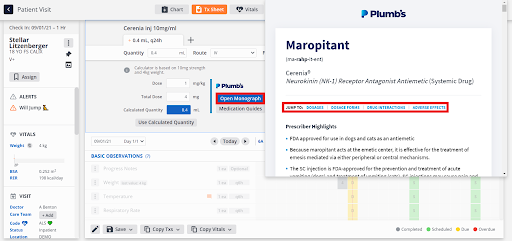
Although not every medication in Instinct has a direct connection to a Plumb’s monograph and medication handout, you can still search for these medications via the Plumb’s search feature (as long as that medication is included in Plumb’s). These product options will be covered by Instinct’s training team when you’re onboarding.
2. Built-In Medication Calculators
The medication calculator in Instinct is based on the information provided about the product, particularly the strength and the concentration/formulation.
As a default, all medications are set to calculate on a mg/kg basis. There are some medications where calculation is preferred based on mg/m2, particularly for chemotherapy medications. This can be adjusted in the settings of the medication product.
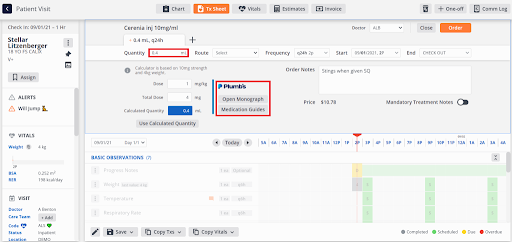
As an added safety feature, the medication calculator will only be available if the patient’s current weight for the visit has been entered.
3. Patient Safety Warning System
When you initially get started with Instinct, you’ll find that some patient safety warnings have been preloaded for you from a list of standards approved by Instinct’s team of veterinarians. These are primarily for dogs and cats, but our team is working to expand this standard list.
Regardless, you have full control to edit the current safety ranges as well as add your own custom safety ranges to medications as necessary. You can also set a high and low range for every medication based on species.
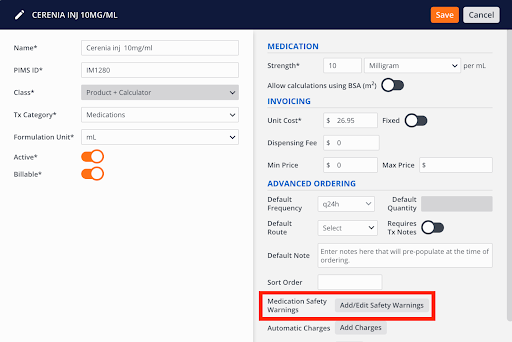
If you have multiple doctors working at your practice, we recommend getting together to find a consensus for all your medications. Most medications in Instinct are set to calculate and warn based on mg/kg dosing. However, if there are medications—particularly chemotherapy medications—that you prefer to calculate off a mg/m2, you can change the warnings to match.
4. Integrated Digital Treatment Sheets
Easily access a patient’s treatment sheets from previous visits as part of the patient’s medical record. You can view the treatment sheet in its entirety without having to decipher handwriting on a scanned piece of paper or locate a physical form.
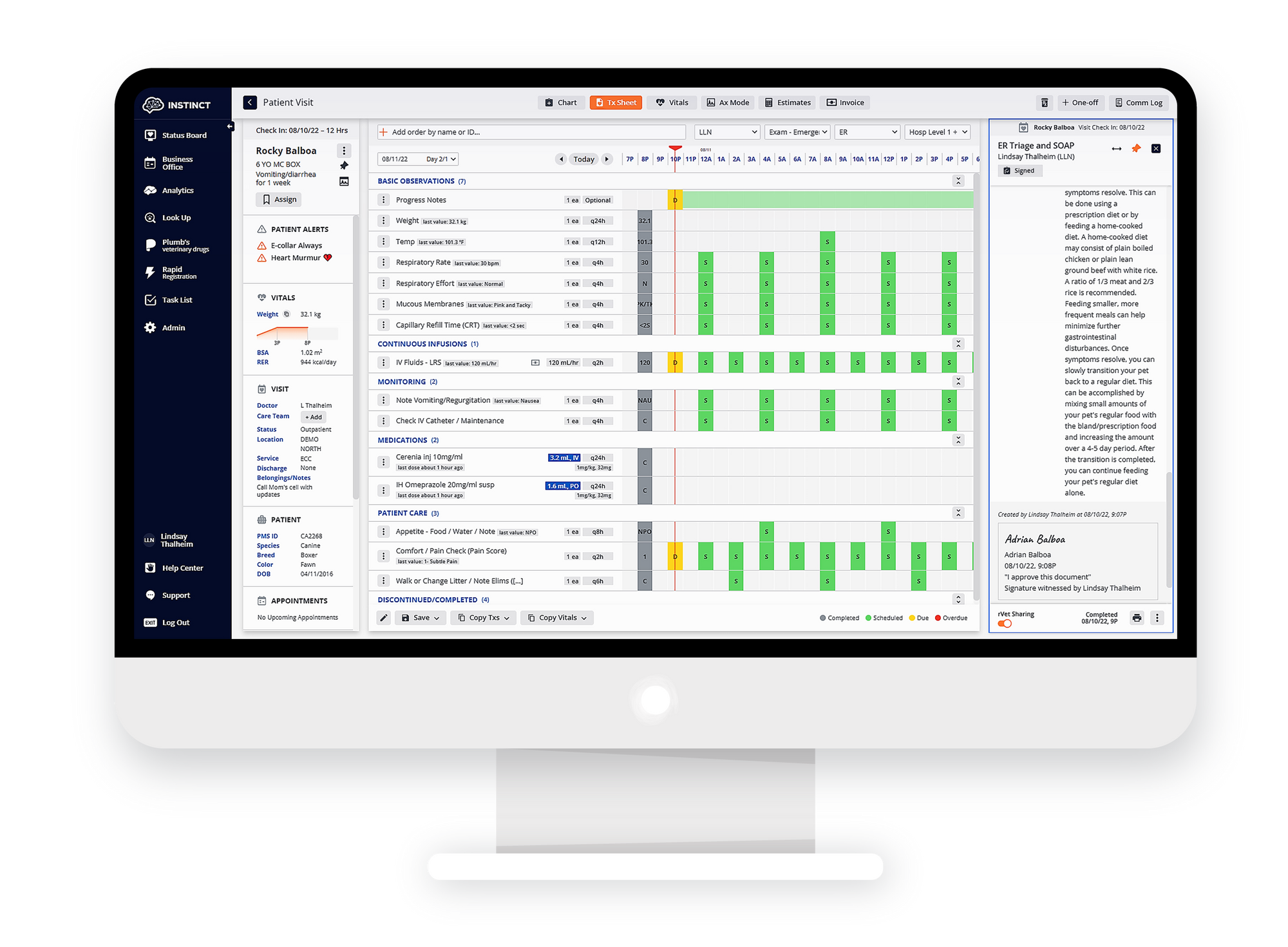
All treatment types are assigned a category and are grouped on the treatment sheet under these categories, making it easy for your team to delegate and prioritize.
Monitoring parameters like TPR and CRT sit together at the top, and even medications are conveniently clustered together for easy viewing.
For crucial tasks or medications that need extra attention, you can even set a Sort Order, sending certain medications to the top of the category’s list view every time. Need to set a rescue midazolam dose? Set the sort order to 1. When it’s ordered, midazolam will show at the top of the medication list every time.
Product groups are essential for accurate, streamlined, and low-stress treatment sheet building, and they can be customized by your team to suit a range of needs.
We’ll provide a handful of group templates as a starting point, but you’ll find that with time your team will start dreaming up group ideas of their own.
Want one broad group that captures all the “basics”? Enhance the Basic Starter groups to include all the patient care parameters you want included. Then expand your patient care and estimate workflows by creating groups with specific purposes:
- Seizure management
- Laceration repair
- Hospitalization admit
Your options are limitless. Creating custom product groups means predictable treatment protocols, which translates to better patient care, higher quality medicine, and even predictable estimating and invoicing.
5. Digital Anesthesia Mode
Anesthesia Mode is another built-in tool that unifies the patient record for you in a practical way. Documentation and monitoring are simple, and mid-procedure, you can easily record intraoperative medication doses like antibiotics, pain medications, or sedative/reversal agents. All the safety features (dose calculator and patient safety warnings) and Plumb’s connection are available here as well.
Like the treatment sheets, Ax Mode leverages automated billing to seamlessly create invoices as you’re caring for your patient. Any billable product ordered in the Ax Mode treatment sheet will send charges to the Instinct Invoice as they’re completed.
You won’t have to spend an hour post-procedure calculating and entering charges anymore because it happened automatically while you were working on other more important things—like caring for your patient.
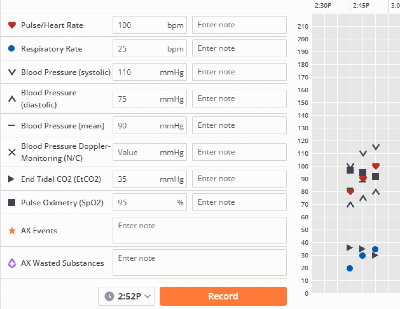
Incorporating Instinct’s EMR into your practice is a significant step towards enhancing the quality of veterinary care you provide. From standardized medication input to automatic charge setups and digital treatment sheets, Instinct offers a range of tools designed to simplify administrative tasks and enhance patient safety. By leveraging these features, you can create a more efficient and organized veterinary practice that benefits both your team and your patients!
Pro Tips for Getting Started with Instinct
Implementing Instinct is a great opportunity to revisit and refine your safety protocols. One of the first aspects you'll want to focus on is how you input medications.
We always recommend standardizing how you enter medication products. This is helpful not just for your own use of these medications but also for taking some pressure off your nursing staff and reducing confusion.
Pro-Tip: In multi-doctor practices, it may be helpful to either have all doctors weigh in on this standardization or at least have a medical director oversee final decisions for continuity and safety.
Balancing team needs and administrative workflows is also important. All veterinary practices have unique perspectives on how to conduct business. Evaluating current practices can help you recognize where improvements are needed, and you can use that knowledge to build a product that truly suits your needs. Instinct’s automatic charge setup can reduce unnecessary tasking for your team while still capturing the revenue that helps you continue providing top-notch care.
Related Article: How to Enhance Medication Safety in Veterinary Hospitals
Some questions to ask yourself and your team:
- What are the charges that you always seem to miss? Is it a blood collection that falls by the wayside in the face of an important healthcare battle? Can something here be automated? If your healthcare teams can focus on patient care while you’re passively capturing those billable items, it’s a win–win.
- What administrative tasks do you have itemized that need to be accounted for but aren’t really relevant to the actual patient care workflow?
- Are there ways you can continue generating that revenue without making your team take an active role?
Alert and task fatigue are very real in any healthcare setting. If you can limit the “to be completed” list on your treatment sheets to only what’s necessary for patient care, your healthcare teams will be grateful (and you’ll see the difference in your invoices).
—
Ready to make Instinct part of your day-to-day? Request a demo to learn more.
